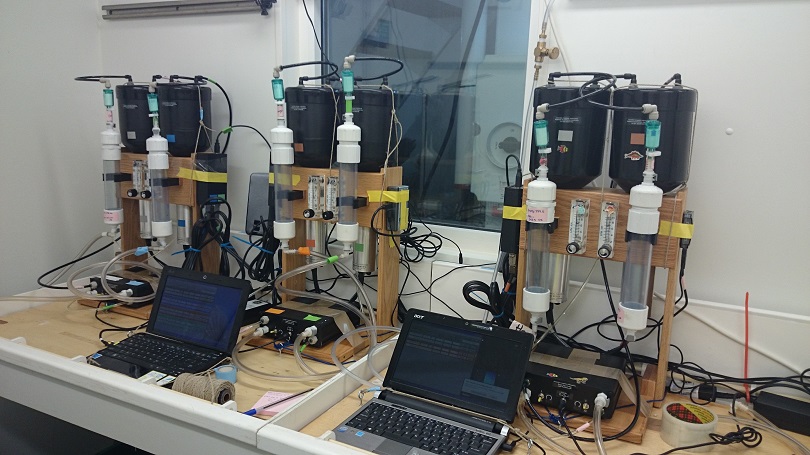By Sarah
Dashfield and Joana (Jo) Nunes
This is our first SSB cruise, as well as our first cruise
overall!!! Exciting stuff!
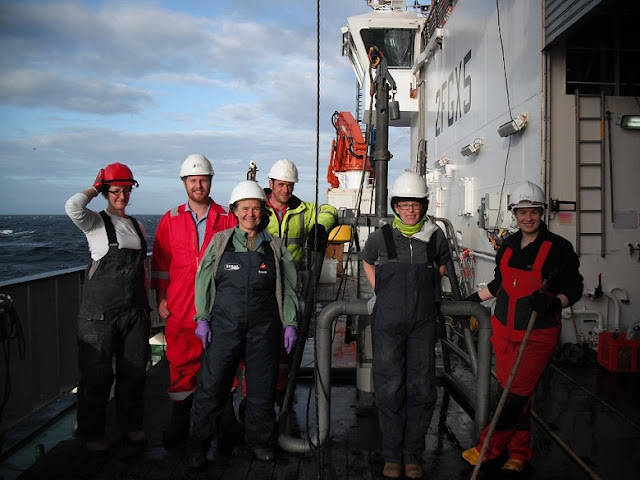 |
| Bulk coring team |
On the second benthic cruise we are responsible for doing
lots and lots of coring, i.e. lots of mud to shovel off the side of the ship!!
Sarah’s work, who is mainly responsible for all the fauna (the beasties) that
live in and on the seabed, involves both the NIOZ and the SMBA box corer. These
corers collect a 0.1m2 and a 0.5m2 sample of the
seafloor, respectively. Epifauna is collected with the Jennings trawl, a 2m net
that is very slowly dragged over the seabed - the nets collect lots of bivalves,
starfish and sea mice (furry and iridescent worms! Yes, really!), snappy Nephrops
norvegica (scampi!) and sometimes even some monkfish, which we don’t keep!
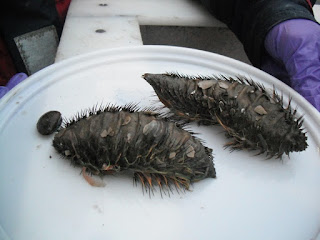 |
| Sea mice |
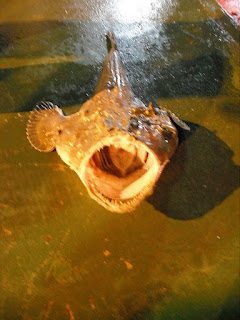 |
| Monkfish |
Jo is responsible for the flux coring. Here, we also use the
NIOZ box corer, but each core is shared by several people. It is Dave who
collects for nutrient flux incubation, Gangi who collects cores for oxygen profile
incubations, and Helen who collects cores for a pulse-chase experiment. This experiment quantifies the exchange of
nutrients between the sediment and the overlaying water.
Jo sub-samples around everyone else: 50mL syringes for pigments and microbial
analysis, surface scrapes for nitrification rates, and, the most fun of all,
10cm diameter cores for denitrification rates, which get whizzed up with a
blender-like piece of kit. The samples
are treated with different chemicals to stop the nitrification process at
different stages, incubated for a minimum of 24 hours and fixed with zinc
chloride. Finally, they are ready for analysis
when we return back to PML.
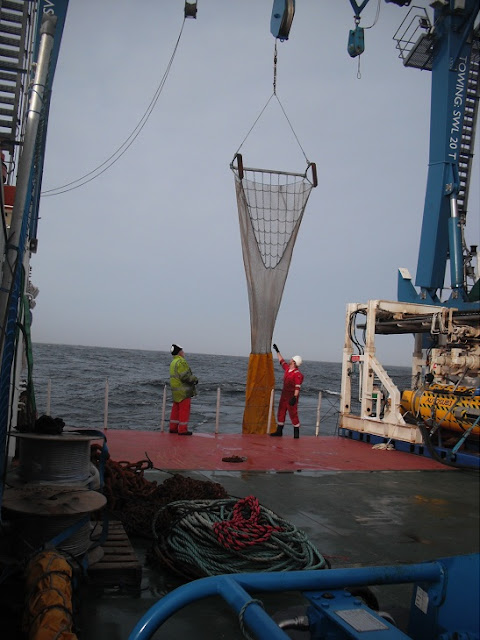 |
| Jennings trawl |
The fauna that we have collected from the trawls and cores
will be identified, counted and weighed when we return to the benthic lab in
PML. This information together with the
microbial data and the chemical analyses can be statistically analysed to
discover whether there is a relationship between them. Finally, this
information can be added to enhance marine models such as ERSEM (the European
Regional Seas Ecosystem Model) which
then will be used to predict how the marine environment may change in the
future.
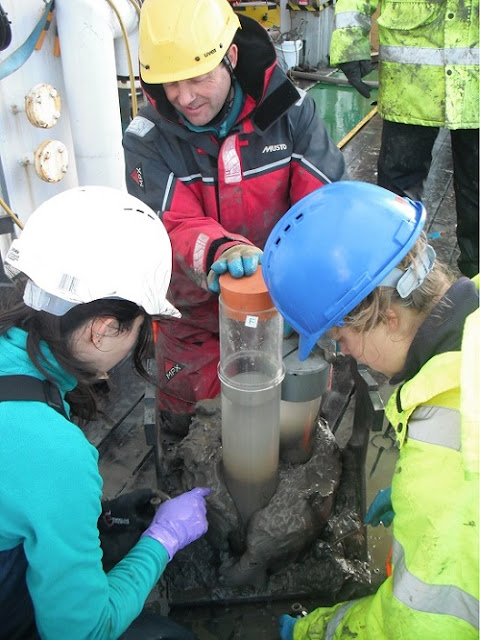 |
| Flux coring |
